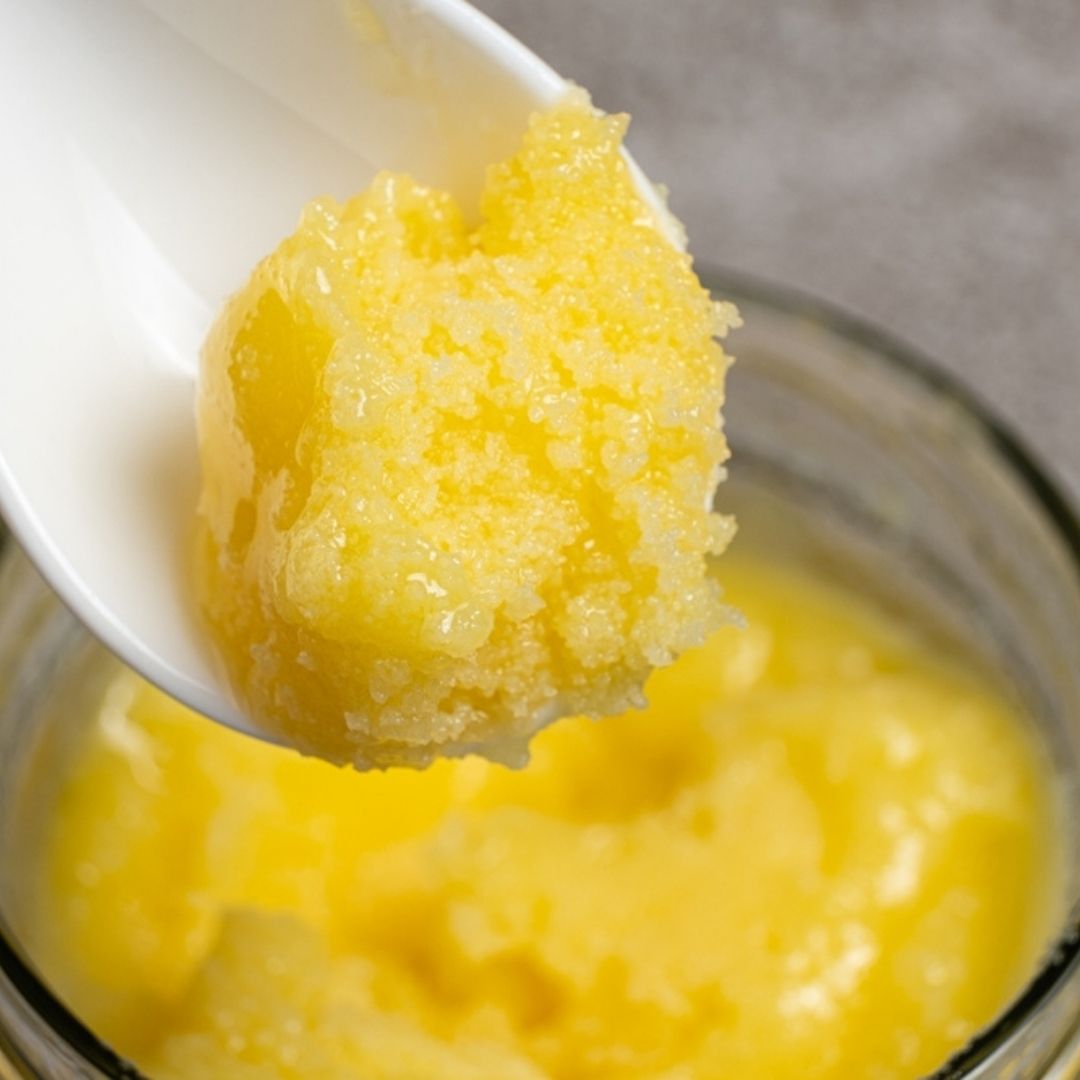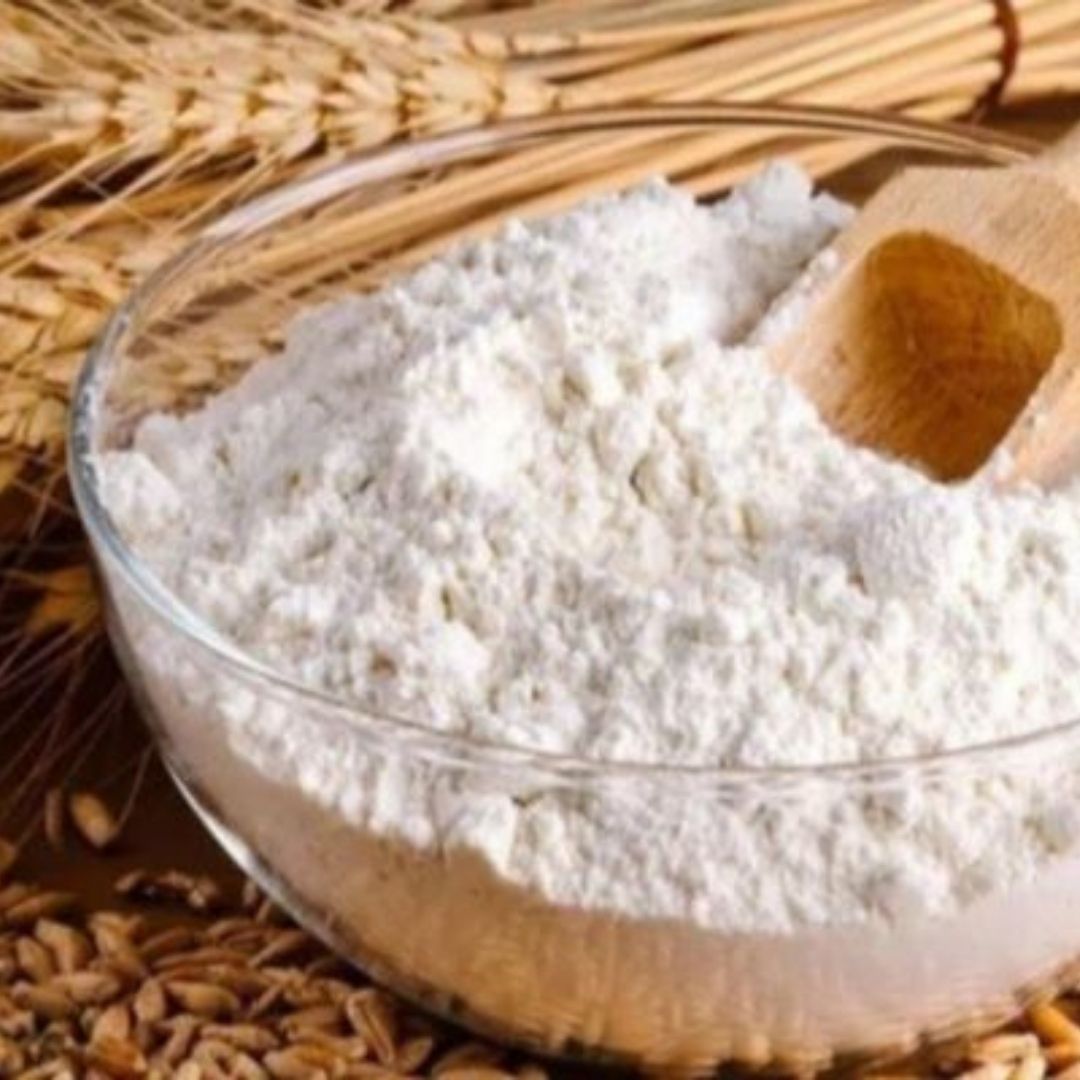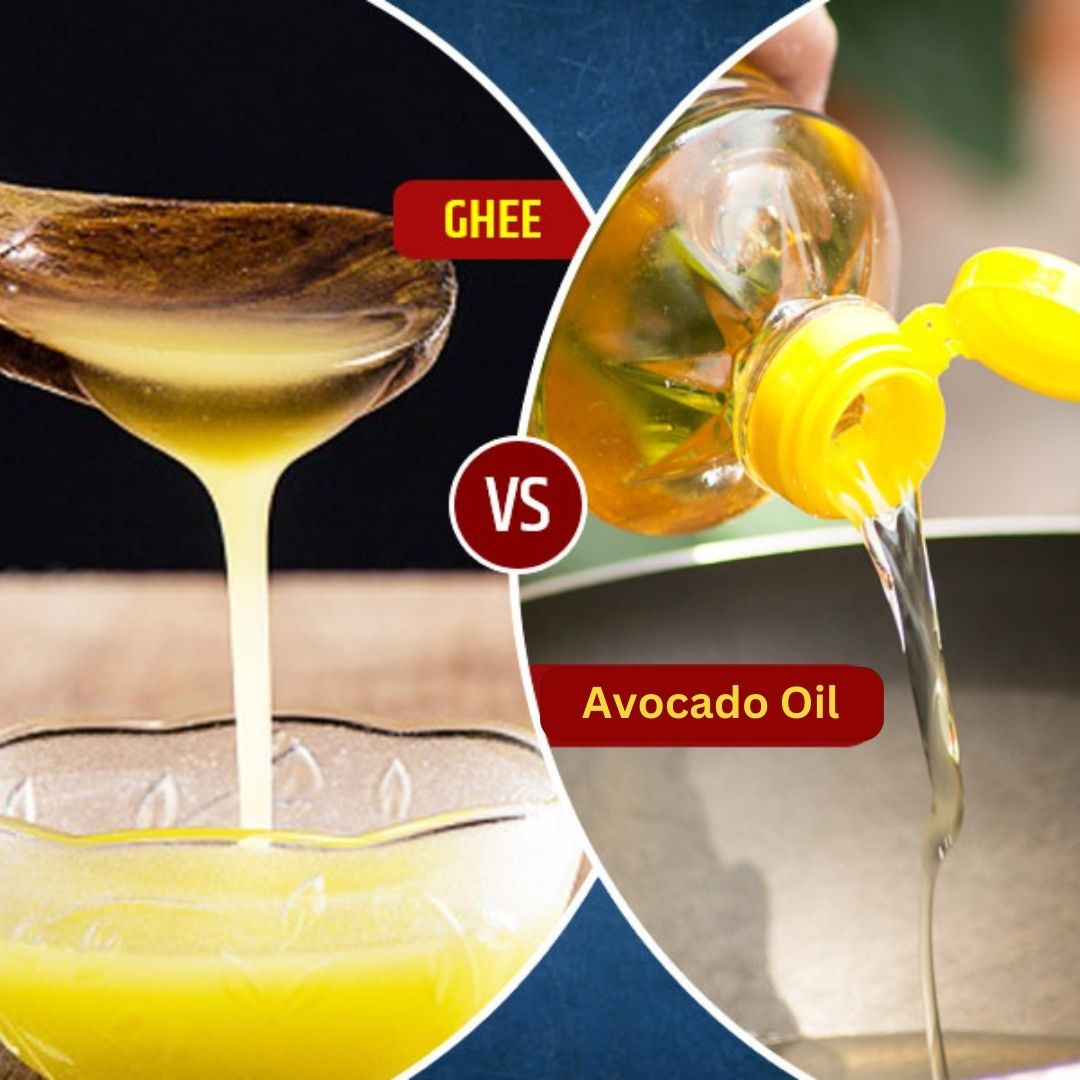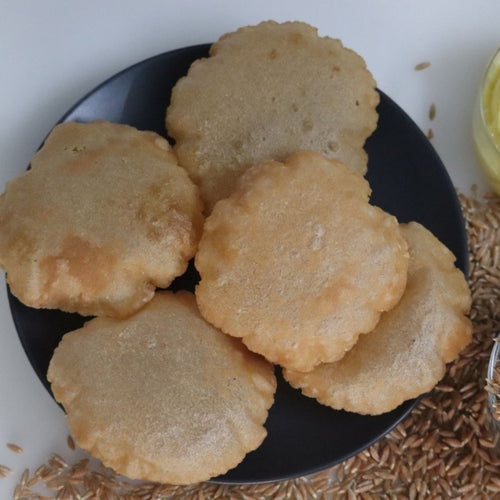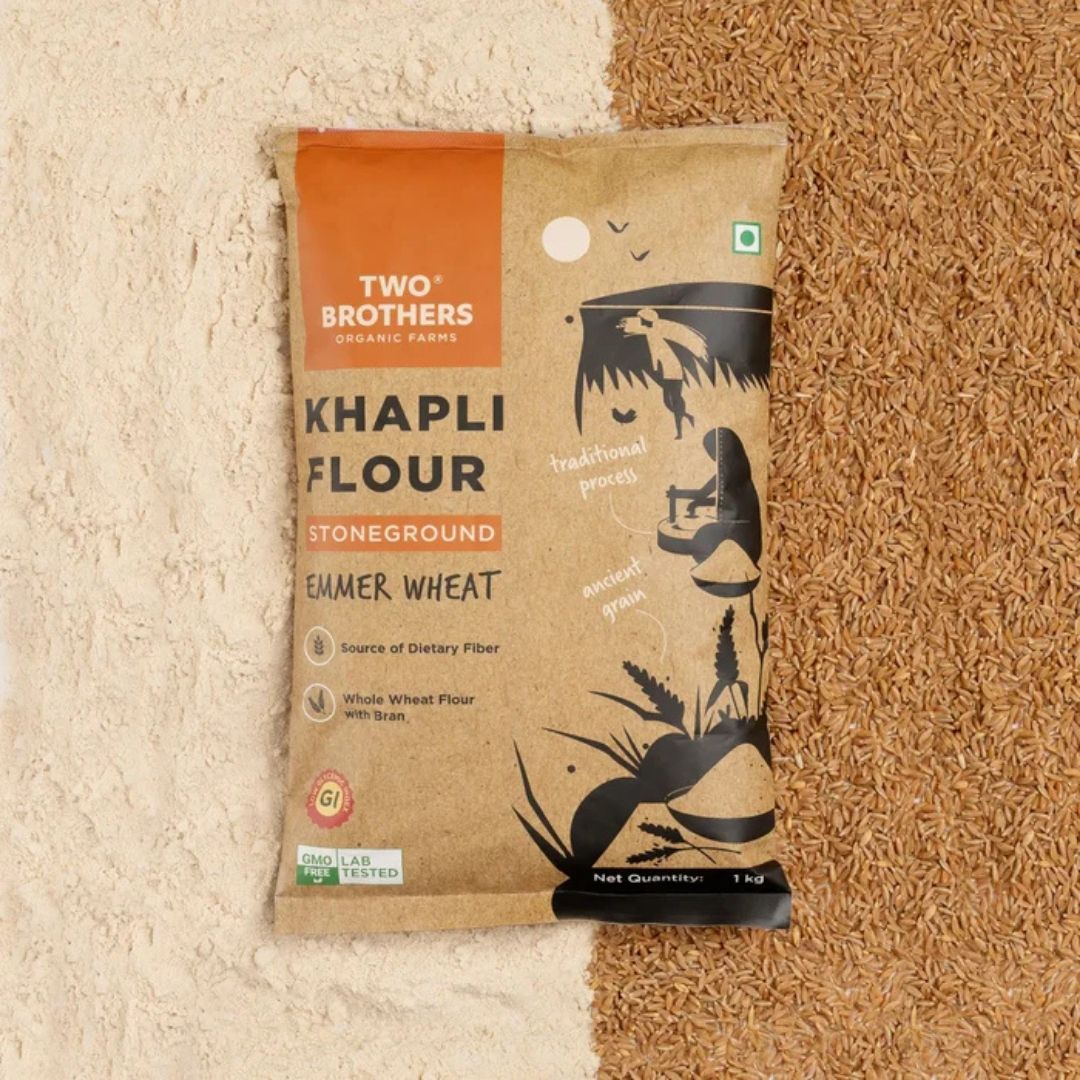In Indian cooking, flours including atta, maida, oats, besan, and suji are frequently utilized. People are frequently confused about which of these flours is best for their health while making this choice. Although whole wheat atta has long been a mainstay in Indian homes, new nutritional trends have made oats, besan, and suji more well-liked substitutes. To assist you in making an informed decision, this article explores the nutritional characteristics and health advantages of various flours.
Knowing the Fundamentals of Oats, Besan, Maida, Atta, and Suji
It's critical to comprehend the fundamental differences between atta, maida, oats, besan, and suji. Whole wheat flour, or atta, is created by grinding the entire wheat grain, including the endosperm, germ, and bran. It keeps the fiber, vitamins, and minerals that are naturally found in wheat grains.
Conversely, maida is a refined white flour that comes from processing just the wheat grain's endosperm. It is devoid of the vital nutrients and fiber found in atta. A whole-grain cereal high in minerals and fiber is oats. Besan, sometimes referred to as chickpea flour, is a gluten-free substitute for wheat flour prepared from ground chickpeas. Made from durum wheat, suji, also known as semolina, is a coarsely ground flour.

Why Is Every Flour Different?
Every flour has distinct qualities and applications in cooking. The presence of the whole wheat grain, including the bran, germ, and endosperm, makes Atta unique. This means that it has higher levels of fiber, vitamins, minerals, and other important nutrients than maida. It is frequently used to produce rotis, chapatis, and other Indian breads because of its coarse texture.
In contrast, maida has a finer texture and a paler tint since it is made from the wheat grain's endosperm. It is frequently used in baking to create cakes, pastries, and other sweet treats.
Oats are well-known for their high fiber content and heart-healthy qualities. Compared to other flours, besan contains more protein and is free of gluten. With its lighter texture, suji is frequently used in many different recipes, including halwa and upma.
Examining Atta in-depth: The Wonder of Whole Wheat
In Indian cooking, atta—also referred to as whole wheat flour—has a special place. It serves as the basis for common dishes including parathas, rotis, and chapatis. The bran, germ, and endosperm of the wheat grain are all ground to make whole wheat atta. In doing so, the wheat grain's natural fiber, vitamins, and minerals are preserved. The higher nutritional value of atta makes it a healthier option when compared to maida. It is good for digestion, controlling blood sugar, and managing weight because it is high in fiber, important nutrients, and has a lower glycemic index.
Benefits to Your Health from Including Atta in Your Diet
A diet rich in atta can be very beneficial to your health. Because atta has a high fiber content, it keeps bowel movements regular and helps avoid constipation, both of which are beneficial to digestive health. Additionally, the fiber makes you feel fuller, which reduces overeating and needless snacking and helps you lose weight. Furthermore, atta raises blood sugar levels more gradually and slowly than maida since it has a lower glycemic index. Because of this, atta is a good option for people who have diabetes or are trying to control their blood sugar levels. You can enhance your general health and reap the nutritional advantages of whole wheat by selecting atta instead of maida.
Atta for Diabetes Control and Weight Management

Atta is a useful supplement to a diet for controlling diabetes and weight loss. Because of its high fiber content, it encourages satiety and lowers the consumption of high-calorie snacks, which aids in weight management. Additionally, fiber improves blood sugar regulation by delaying the release of glucose into the bloodstream. This is especially crucial for people who already have diabetes or are at risk of getting the disease. Additionally, atta raises blood sugar levels more gradually and slowly than maida since it has a lower glycemic index. People can better control their glycemic load and reap the benefits of whole grains by selecting atta instead of maida.
Unveiled: Is Maida Actually That Bad for You?

White flour, or maida, is a common ingredient in baking and cooking. Concern over its potential effects on health has grown, though. Although maida is not intrinsically unhealthy, atta is said to be more nutrient-dense than maida. The bran and germ from the wheat grain are extracted by refining and processing maida. Fiber and other important nutrients are lost as a result of this. Overindulging in maida, particularly when it comes to deep-fried appetizers, pastries, and parathas, can cause blood sugar increases and weight gain.
Knowing the Procedure: How Maida Is Created
Unlike atta, maida has a finer texture and a paler hue since only the wheat grain's endosperm is ground throughout the production process. The starchy, primarily carbohydrate-containing portion of the wheat kernel is called the endosperm. Refining maida entails taking out the wheat grain's bran and germ, which removes the fiber and vital nutrients. Because it may produce a smooth texture in cakes, pastries, and bread, this refined and processed flour is frequently used in baking. Since maida has the ideal qualities to make baked items light and airy, bakeries and commercial food production use it extensively.
The Effects of Eating Maida on Health
Overindulging in maida can have detrimental effects on one's health. Because maida lacks the fiber and other minerals found in atta, it may have an impact on blood sugar levels and digestive health. Maida's refined texture makes it quickly absorbed and digested, which raises blood sugar levels quickly. This may raise the risk of diabetes and cause blood sugar abnormalities. In addition, maida has less nutritional value than atta. Overindulgence in maida-based foods, particularly those heavy in harmful fats and added sugars, can lead to nutritional deficiencies, weight gain, and general ill health. For improved health results, it's crucial to favor whole wheat substitutes like atta and consume maida in moderation.
Oatmeal: A Heart-Healthy Option
Oats' high fiber content and many health advantages have made them renowned as a heart-healthy food. A whole-grain cereal high in beta-glucan, a soluble fiber, is oats. It has been demonstrated that this kind of fiber can help lower cholesterol and the risk of heart disease. Oats' fiber helps with digestion and increases feelings of fullness, which makes them advantageous for weight loss. Oats provide added nutritional benefits because they are a strong source of vitamins, minerals, and antioxidants.
The Reasons Oats Are Listed as Superfoods
Because of its high nutritional content and plethora of health advantages, oats are frequently referred to as superfoods. They are brimming with vital nutrients, including antioxidants, iron, and vitamins B, E, and K. Particularly well-known for having a high fiber content—both soluble and insoluble—are oats. Like beta-glucan, soluble fiber contributes to heart health by lowering cholesterol. Constipation is avoided by insoluble fiber, which improves digestion and gives the stool more volume. Because fiber increases satiety and decreases the intake of high-calorie foods, oats' high fiber content also aids in weight loss. Your general health and wellbeing may benefit from eating oats in your diet.
Innovative Ways to Include Oats in Your Everyday Meals
A tasty and nourishing strategy to improve your health is to incorporate oats into your regular meals. Here are a few inventive methods to include oats in your diet:
- For a wholesome breakfast, start your day with a large bowl of oats garnished with almonds, fresh fruits, and a drizzle of honey.
- Add blended oats to smoothies for a satisfying, high-fiber snack.
- As a healthier substitute for breadcrumbs, cover cooked chicken or fish with oats.
- For a wholesome on-the-go snack, combine oats, nuts, seeds, and dried fruits to make homemade granola bars or energy balls.
These are just a handful of the ways you may include oats in your regular meals. Use your imagination and try out various recipes to take use of oats' many health advantages and adaptability.
Besan: A Gluten-Free Substitute
Besan, sometimes referred to as chickpea flour, is a well-liked gluten-free substitute for wheat flour. It has a distinctive nutty flavor and is frequently used in traditional Indian cookery. It is made from ground chickpeas. It is a basic ingredient in besan ladoos, cheelas, and pakoras. Compared to wheat flour, besan has less carbs and more protein. Additionally, it's a good source of minerals including iron, fiber, and B-complex vitamins. If you have a gluten sensitivity or just want to switch up your flour options, adding besan to your diet is a healthier option.
Benefits of Besan Nutritionally Compared to Other Flours
Among flours, besan has distinct nutritional benefits. Because of its high protein content, it's a great plant-based protein source for vegans and vegetarians. In addition, besan has more fiber than wheat flour, which facilitates regular bowel movements and helps with digestion. Moreover, besan is free of gluten, which means that people who are sensitive to or intolerant of gluten can use it. Besan's high protein and fiber content helps you feel fuller for longer, which helps you control your weight. You can take advantage of the nutritional advantages of this adaptable and better flour substitute by including besan in your diet.
Besan in both Modern and Traditional Cooking
Besan is an adaptable ingredient used in both contemporary and traditional cookery. Besan is the primary ingredient of besan ladoos, cheelas, and pakoras in traditional Indian food, giving them a distinct flavor and texture. Besan is a popular plant-based, gluten-free substitute for wheat flour in modern cooking. It can be used as a coating for frying, in baking, and as a thickening ingredient in soups and gravies. Because of its distinct qualities and nutty flavor, besan can be used in both conventional and creative recipes.
Suji: The Adaptable and Light Flour
Semolina, or suji flour, is a versatile flour that has a lighter texture than other flours. It is frequently used in Mediterranean and Indian cuisines and is made from durum wheat. Suji's high carbohydrate content helps with digestion and gives you energy. It's frequently used to prepare foods like halwa, upma, and different baked items. Suji's adaptability makes it a popular ingredient in many different cuisines since it can be used in savory as well as sweet recipes, giving food a distinctive flavor and texture.
Suji's Health Benefits for Digestion and Energy
Suji is good for many aspects of health, especially digestion and vitality. Rich in carbohydrates, it provides a rapid and long-lasting energy boost, which makes it a great option for breakfast or as a meal before working out. Furthermore, because suji has a high fiber content, it promotes healthy digestion, avoids constipation, and keeps bowel regularity. Suji can promote a healthy digestive system and help you stay energized throughout the day when you include it in your diet. Suji should be taken in moderation, though, as too much of it might cause blood sugar surges and weight gain.
Creative Suji Recipes for a Well-Blended Diet
Suji can provide nutritious value and variety to your diet. Here are some creative ways to incorporate suji into a balanced diet:
-
Suji Upma: Cook roasted suji with water or vegetable broth after sautéing veggies in a skillet. Serve as a filling alternative for breakfast or lunch and season with spices.
-
Suji Dhokla: Combine yogurt, green chili paste, and ginger-garlic paste with suji. After the batter has cooked through steam, decorate with curry leaves and mustard seeds.
-
Suji Muffins: Combine yogurt, almonds, honey, and mashed bananas with suji. For a tasty and nutritious snack, add baking powder and bake till golden brown.
-
Suji Pancakes: Mix buttermilk, spices, and grated vegetables with suji. Serve the batter with yogurt or chutney after pan-frying it until golden brown.
These recipes offer a well-rounded combination of nutrients for a healthful diet while showcasing the variety of suji.
Evaluating the Health Advantages on Different Levels
Take into account elements such as fiber content, glycemic index, and overall nutritional value when comparing the health advantages of various flours. When compared to refined flour, whole wheat flour (atta) has a lower glycemic index, more fiber, and important nutrients. Oats are high in fiber and have heart-healthy properties. A more protein-dense and gluten-free substitute is besan. Suji promotes digestion and provides energy. Since every flour has different health benefits, it's critical to select the one that best suits your dietary requirements and tastes.
Which Flour Has the Most Fiber?
Oats and whole wheat flour (atta) are the winners in terms of fiber content. The bran and germ of the wheat grain, which are high in dietary fiber, help with digestion, encourage regular bowel movements, and support maintaining a healthy weight, are found in whole wheat atta. Oats include a high amount of soluble and insoluble fiber. While insoluble fiber adds weight to the stool and helps avoid constipation, soluble fiber, such beta-glucan, helps lower cholesterol levels. While besan and suji contain less fiber than atta and oats, they nonetheless make a significant contribution to the total amount of fiber in the diet.
Debate on Glycemic Index: Which Type of Flour Is Best for Blood Sugar?
The pace at which a food high in carbohydrates elevates blood sugar levels is measured by the glycemic index. Because whole wheat flour (atta) and oats have a lower glycemic index than refined flour, they raise blood sugar levels more gradually and more gradually after eating. In general, foods having a lower glycemic index are thought to be more beneficial for controlling blood sugar. Because refined flour has a higher glycemic index, blood sugar levels may rise more quickly from it. People can better control their blood sugar levels by using whole wheat flour or oats instead of refined flour.
Conclusion
Making educated dietary decisions requires knowing the distinctions between refined flour, oats, besan, and suji as well as whole wheat flour (atta). Every flour has different nutritional advantages; there are whole wheat varieties as well as gluten-free choices. Including a range of these flours can improve your general health by supporting heart health, energy levels, and weight control. You may take advantage of the unique benefits of each option while maintaining a balanced diet by finding inventive ways to incorporate different flours into your meals. By choosing carefully which flour to use, you may prioritize your health and well-being while making meal decisions.
Frequently Asked Questions
Is it possible to use whole wheat flour in place of refined flour in baking recipes?
Yes, whole wheat flour can be used in baking recipes in place of refined flour. But whole wheat flour contains more fiber and can give baked items a thicker texture. It is advised to use a blend of whole wheat and refined flour or to adhere to certain recipes made with whole wheat flour.
Is flour made from oats a good substitute for losing weight?
For weight loss, oat-based flour can be a viable substitute. Because oats are high in fiber, they help with satiety and prevent overeating. Making meals with flour made from oats can help save calories and offer a healthier alternative for managing weight.
Which type of flour is most appropriate for those with diabetes?
Because whole wheat flour (atta) has a higher fiber content and a lower glycemic index, it is often a healthier option for those with diabetes. This supports general health and aids in improved blood sugar regulation. But it's crucial to keep an eye on portion sizes and get individualized nutritional advice from a medical practitioner.


